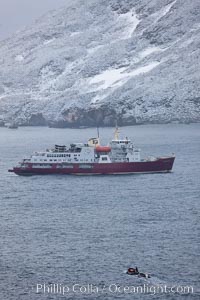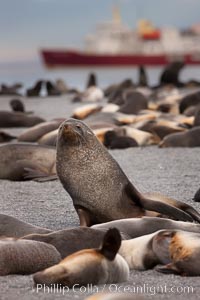
A colony of Antarctic fur seals, with the adult male (bull) in the center of his harem of females and juvenile fur seals.
Species: Antarctic fur seal, Arctocephalus gazella
Location: Right Whale Bay, South Georgia Island
Image ID: 24326
Species: Antarctic fur seal, Arctocephalus gazella
Location: Right Whale Bay, South Georgia Island
Image ID: 24326
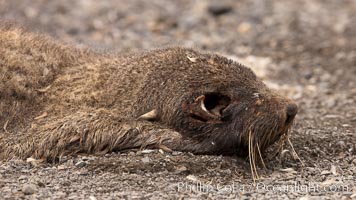
Antarctic fur seal carcass, lying on pebble beach. Dead fur seals are quickly scavenged by giant petrels, leaving the pelt and skeleton of the dead fur seal.
Species: Antarctic fur seal, Arctocephalus gazella
Location: Right Whale Bay, South Georgia Island
Image ID: 24327
Species: Antarctic fur seal, Arctocephalus gazella
Location: Right Whale Bay, South Georgia Island
Image ID: 24327
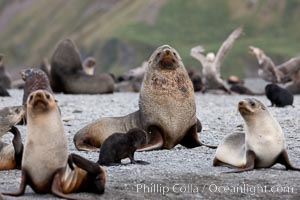
Adult male bull Antarctic fur seal, amid his harem of females and juvenile fur seals.
Species: Antarctic fur seal, Arctocephalus gazella
Location: Right Whale Bay, South Georgia Island
Image ID: 24332
Species: Antarctic fur seal, Arctocephalus gazella
Location: Right Whale Bay, South Georgia Island
Image ID: 24332
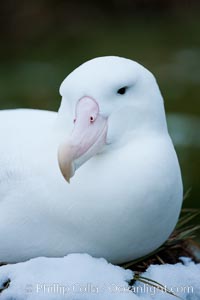
Wandering albatross, on nest and the Prion Island colony. The wandering albatross has the largest wingspan of any living bird, with the wingspan between, up to 12' from wingtip to wingtip. It can soar on the open ocean for hours at a time, riding the updrafts from individual swells, with a glide ratio of 22 units of distance for every unit of drop. The wandering albatross can live up to 23 years. They hunt at night on the open ocean for cephalopods, small fish, and crustaceans. The survival of the species is at risk due to mortality from long-line fishing gear.
Species: Wandering albatross, Diomedea exulans
Location: Prion Island, South Georgia Island
Image ID: 24428
Species: Wandering albatross, Diomedea exulans
Location: Prion Island, South Georgia Island
Image ID: 24428
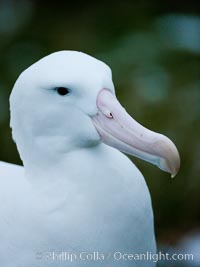
Wandering albatross, on nest and the Prion Island colony. The wandering albatross has the largest wingspan of any living bird, with the wingspan between, up to 12' from wingtip to wingtip. It can soar on the open ocean for hours at a time, riding the updrafts from individual swells, with a glide ratio of 22 units of distance for every unit of drop. The wandering albatross can live up to 23 years. They hunt at night on the open ocean for cephalopods, small fish, and crustaceans. The survival of the species is at risk due to mortality from long-line fishing gear.
Species: Wandering albatross, Diomedea exulans
Location: Prion Island, South Georgia Island
Image ID: 24429
Species: Wandering albatross, Diomedea exulans
Location: Prion Island, South Georgia Island
Image ID: 24429
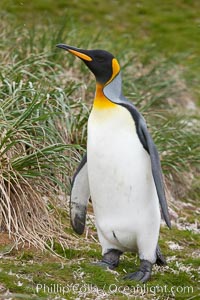
King penguin at Salisbury Plain, Bay of Isles, South Georgia Island.
Species: King penguin, Aptenodytes patagonicus
Location: Salisbury Plain, South Georgia Island
Image ID: 24437
Species: King penguin, Aptenodytes patagonicus
Location: Salisbury Plain, South Georgia Island
Image ID: 24437
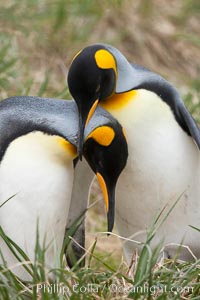
King penguin, mated pair courting, displaying courtship behavior including mutual preening.
Species: King penguin, Aptenodytes patagonicus
Location: Salisbury Plain, South Georgia Island
Image ID: 24438
Species: King penguin, Aptenodytes patagonicus
Location: Salisbury Plain, South Georgia Island
Image ID: 24438
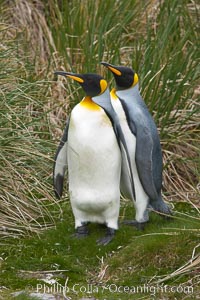
King penguins at Salisbury Plain, Bay of Isles, South Georgia Island. Hundreds of thousands of pairs of king penguins nest here, laying eggs in December and February, then alternating roles between foraging for food and caring for the egg or chick.
Species: King penguin, Aptenodytes patagonicus
Location: Salisbury Plain, South Georgia Island
Image ID: 24439
Species: King penguin, Aptenodytes patagonicus
Location: Salisbury Plain, South Georgia Island
Image ID: 24439
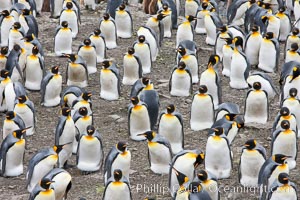
King penguin colony. Over 100,000 pairs of king penguins nest at Salisbury Plain, laying eggs in December and February, then alternating roles between foraging for food and caring for the egg or chick.
Species: King penguin, Aptenodytes patagonicus
Location: Salisbury Plain, South Georgia Island
Image ID: 24444
Species: King penguin, Aptenodytes patagonicus
Location: Salisbury Plain, South Georgia Island
Image ID: 24444
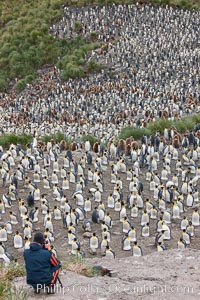
Photographer overlooking the vast king penguin colony at Salisbury Plain, with over 100,000 pairs of king penguins.
Species: King penguin, Aptenodytes patagonicus
Location: Salisbury Plain, South Georgia Island
Image ID: 24445
Species: King penguin, Aptenodytes patagonicus
Location: Salisbury Plain, South Georgia Island
Image ID: 24445
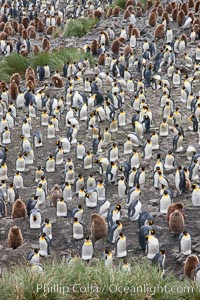
King penguins at Salisbury Plain.
Species: King penguin, Aptenodytes patagonicus
Location: Salisbury Plain, South Georgia Island
Image ID: 24446
Species: King penguin, Aptenodytes patagonicus
Location: Salisbury Plain, South Georgia Island
Image ID: 24446
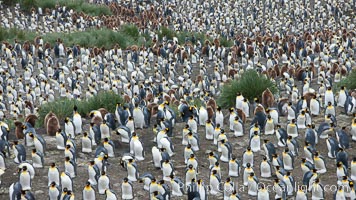
King penguin colony. Over 100,000 pairs of king penguins nest at Salisbury Plain, laying eggs in December and February, then alternating roles between foraging for food and caring for the egg or chick.
Species: King penguin, Aptenodytes patagonicus
Location: Salisbury Plain, South Georgia Island
Image ID: 24448
Species: King penguin, Aptenodytes patagonicus
Location: Salisbury Plain, South Georgia Island
Image ID: 24448
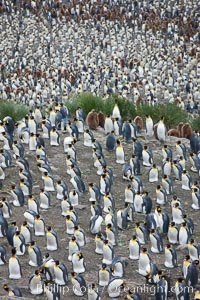
King penguin colony. Over 100,000 pairs of king penguins nest at Salisbury Plain, laying eggs in December and February, then alternating roles between foraging for food and caring for the egg or chick.
Species: King penguin, Aptenodytes patagonicus
Location: Salisbury Plain, South Georgia Island
Image ID: 24449
Species: King penguin, Aptenodytes patagonicus
Location: Salisbury Plain, South Georgia Island
Image ID: 24449
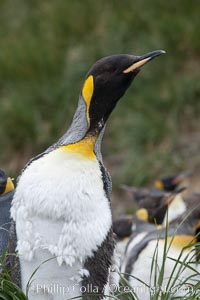
Molting king penguin.
Species: King penguin, Aptenodytes patagonicus
Location: Salisbury Plain, South Georgia Island
Image ID: 24450
Species: King penguin, Aptenodytes patagonicus
Location: Salisbury Plain, South Georgia Island
Image ID: 24450
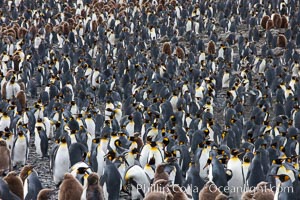
King penguin colony. Over 100,000 pairs of king penguins nest at Salisbury Plain, laying eggs in December and February, then alternating roles between foraging for food and caring for the egg or chick.
Species: King penguin, Aptenodytes patagonicus
Location: Salisbury Plain, South Georgia Island
Image ID: 24451
Species: King penguin, Aptenodytes patagonicus
Location: Salisbury Plain, South Georgia Island
Image ID: 24451
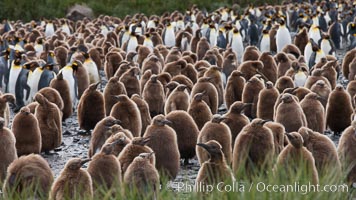
King penguins at Salisbury Plain. Silver and black penguins are adults, while brown penguins are 'oakum boys', juveniles named for their distinctive fluffy plumage that will soon molt and taken on adult coloration.
Species: King penguin, Aptenodytes patagonicus
Location: Salisbury Plain, South Georgia Island
Image ID: 24452
Species: King penguin, Aptenodytes patagonicus
Location: Salisbury Plain, South Georgia Island
Image ID: 24452
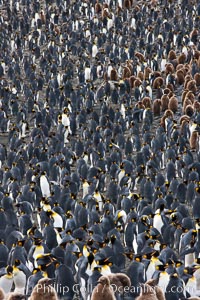
King penguin colony. Over 100,000 pairs of king penguins nest at Salisbury Plain, laying eggs in December and February, then alternating roles between foraging for food and caring for the egg or chick.
Species: King penguin, Aptenodytes patagonicus
Location: Salisbury Plain, South Georgia Island
Image ID: 24453
Species: King penguin, Aptenodytes patagonicus
Location: Salisbury Plain, South Georgia Island
Image ID: 24453
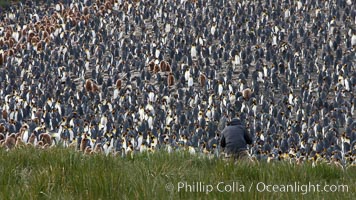
King penguin colony. Over 100,000 pairs of king penguins nest at Salisbury Plain, laying eggs in December and February, then alternating roles between foraging for food and caring for the egg or chick.
Species: King penguin, Aptenodytes patagonicus
Location: Salisbury Plain, South Georgia Island
Image ID: 24454
Species: King penguin, Aptenodytes patagonicus
Location: Salisbury Plain, South Georgia Island
Image ID: 24454
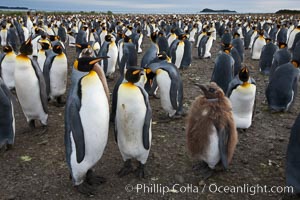
King penguins at Salisbury Plain. Silver and black penguins are adults, while brown penguins are 'oakum boys', juveniles named for their distinctive fluffy plumage that will soon molt and taken on adult coloration.
Species: King penguin, Aptenodytes patagonicus
Location: Salisbury Plain, South Georgia Island
Image ID: 24457
Species: King penguin, Aptenodytes patagonicus
Location: Salisbury Plain, South Georgia Island
Image ID: 24457
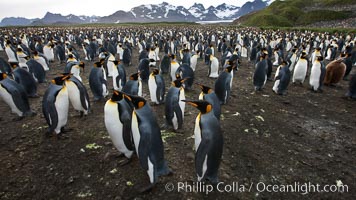
King penguin colony at Salisbury Plain, Bay of Isles, South Georgia Island. Over 100,000 pairs of king penguins nest here, laying eggs in December and February, then alternating roles between foraging for food and caring for the egg or chick.
Species: King penguin, Aptenodytes patagonicus
Location: Salisbury Plain, South Georgia Island
Image ID: 24458
Species: King penguin, Aptenodytes patagonicus
Location: Salisbury Plain, South Georgia Island
Image ID: 24458
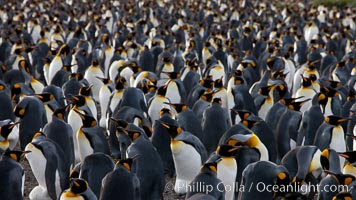
King penguin colony at Salisbury Plain, Bay of Isles, South Georgia Island. Over 100,000 pairs of king penguins nest here, laying eggs in December and February, then alternating roles between foraging for food and caring for the egg or chick.
Species: King penguin, Aptenodytes patagonicus
Location: Salisbury Plain, South Georgia Island
Image ID: 24459
Species: King penguin, Aptenodytes patagonicus
Location: Salisbury Plain, South Georgia Island
Image ID: 24459
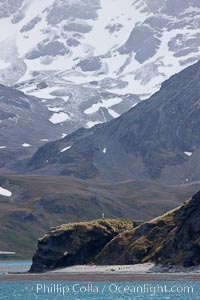
Shackleton Memorial Cross, with mountains of South Georgia Island.
Location: Grytviken, South Georgia Island
Image ID: 24466
Location: Grytviken, South Georgia Island
Image ID: 24466
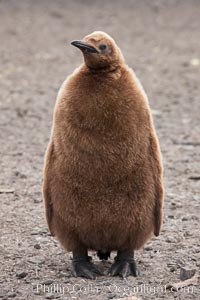
Oakum boys, juvenile king penguins at Salisbury Plain, South Georgia Island. Named 'oakum boys' by sailors for the resemblance of their brown fluffy plumage to the color of oakum used to caulk timbers on sailing ships, these year-old penguins will soon shed their fluffy brown plumage and adopt the colors of an adult.
Species: King penguin, Aptenodytes patagonicus
Location: Salisbury Plain, South Georgia Island
Image ID: 24534
Species: King penguin, Aptenodytes patagonicus
Location: Salisbury Plain, South Georgia Island
Image ID: 24534
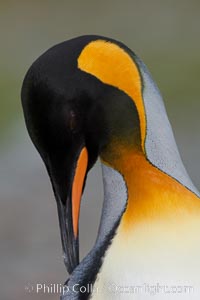
King penguin, showing ornate and distinctive neck, breast and head plumage and orange beak.
Species: King penguin, Aptenodytes patagonicus
Location: Fortuna Bay, South Georgia Island
Image ID: 24600
Species: King penguin, Aptenodytes patagonicus
Location: Fortuna Bay, South Georgia Island
Image ID: 24600
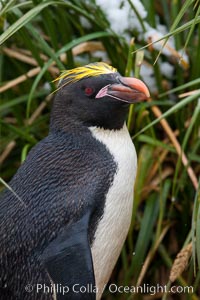
Macaroni penguin, amid tall tussock grass, Cooper Bay, South Georgia Island.
Species: Macaroni penguin, Eudyptes chrysolophus
Location: Cooper Bay, South Georgia Island
Image ID: 24683
Species: Macaroni penguin, Eudyptes chrysolophus
Location: Cooper Bay, South Georgia Island
Image ID: 24683
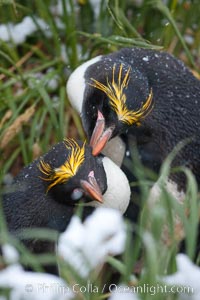
Macaroni penguin, amid tall tussock grass, Cooper Bay, South Georgia Island.
Species: Macaroni penguin, Eudyptes chrysolophus
Location: Cooper Bay, South Georgia Island
Image ID: 24710
Species: Macaroni penguin, Eudyptes chrysolophus
Location: Cooper Bay, South Georgia Island
Image ID: 24710
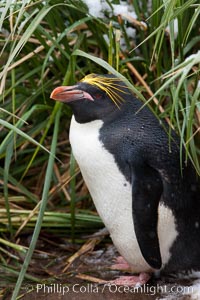
Macaroni penguin, amid tall tussock grass, Cooper Bay, South Georgia Island.
Species: Macaroni penguin, Eudyptes chrysolophus
Location: Cooper Bay, South Georgia Island
Image ID: 24711
Species: Macaroni penguin, Eudyptes chrysolophus
Location: Cooper Bay, South Georgia Island
Image ID: 24711
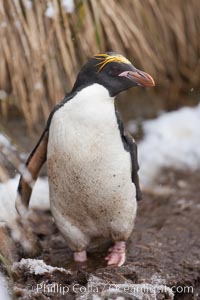
Macaroni penguin, amid tall tussock grass, Cooper Bay, South Georgia Island.
Species: Macaroni penguin, Eudyptes chrysolophus
Location: Cooper Bay, South Georgia Island
Image ID: 24713
Species: Macaroni penguin, Eudyptes chrysolophus
Location: Cooper Bay, South Georgia Island
Image ID: 24713
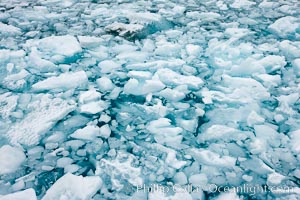
Drygalski Fjord, packed with brash ice which has broken away from the glacier at the end of the narrow fjord.
Location: Drygalski Fjord, South Georgia Island
Image ID: 24715
Location: Drygalski Fjord, South Georgia Island
Image ID: 24715
